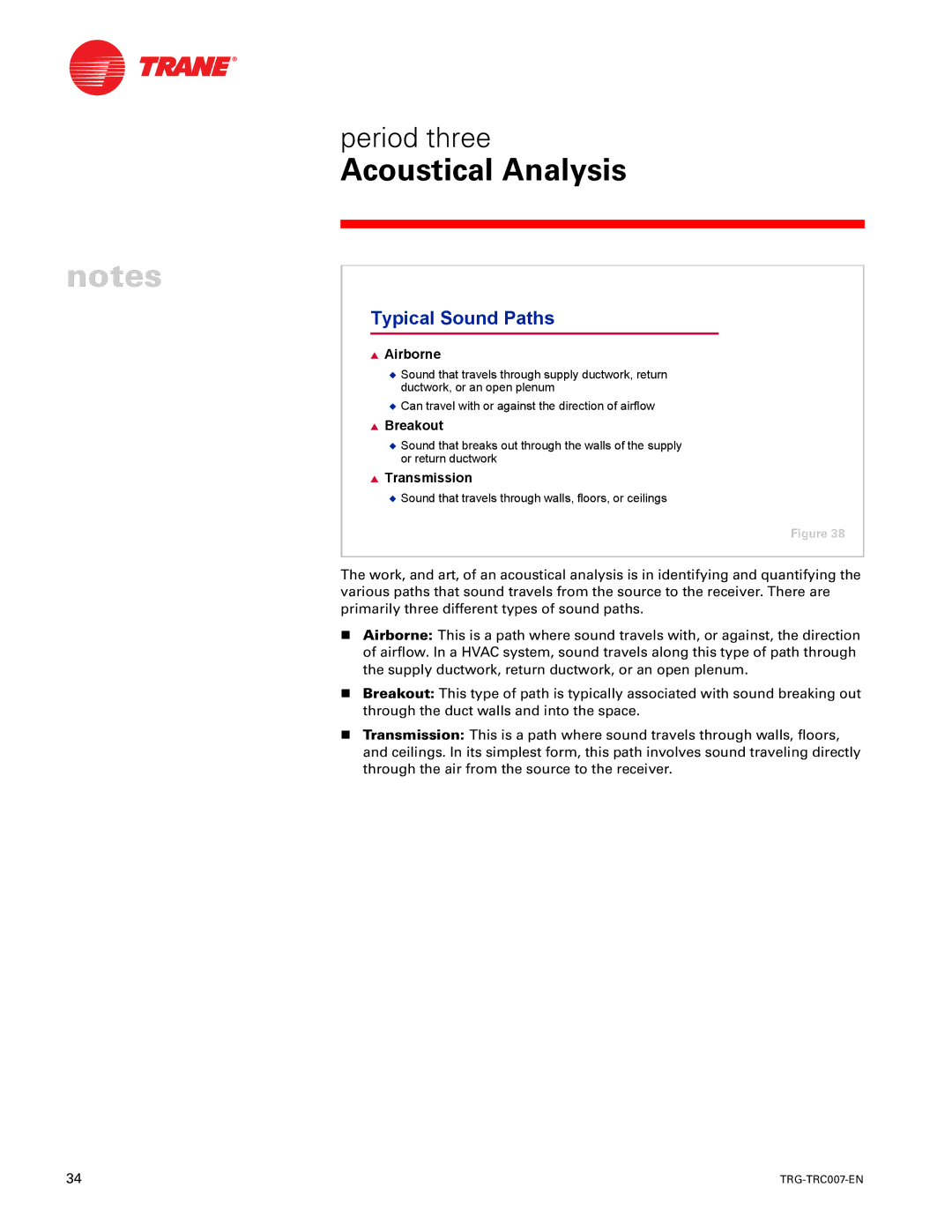
period three
Acoustical Analysis
notes
Typical Sound Paths
IAirborne
KSound that travels through supply ductwork, return ductwork, or an open plenum
KCan travel with or against the direction of airflow
I Breakout
KSound that breaks out through the walls of the supply or return ductwork
ITransmission
KSound that travels through walls, floors, or ceilings
Figure 38
The work, and art, of an acoustical analysis is in identifying and quantifying the various paths that sound travels from the source to the receiver. There are primarily three different types of sound paths.
nAirborne: This is a path where sound travels with, or against, the direction of airflow. In a HVAC system, sound travels along this type of path through the supply ductwork, return ductwork, or an open plenum.
nBreakout: This type of path is typically associated with sound breaking out through the duct walls and into the space.
nTransmission: This is a path where sound travels through walls, floors, and ceilings. In its simplest form, this path involves sound traveling directly through the air from the source to the receiver.
34 |
|
